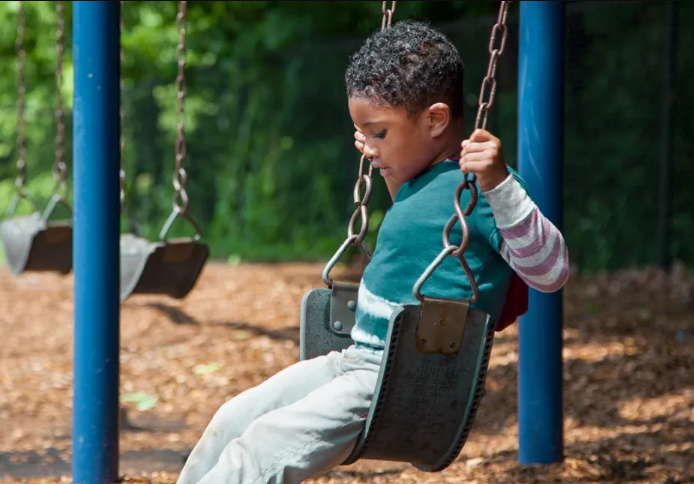Communication is essential to our existence as it can shape relationships, promote understanding, and link us to the outside world.
However, some autistic children must overcome the obstacle of bridging communication, leaving them confined to silence despite a deep need to convey their ideas and emotions.
As every child is unique, with their own needs and skills, It is your responsibility to break down non-verbal communication barriers and forge a close bond with these extraordinary individuals.
In this post, we’ll dig into the complex world of non-verbal autism, giving you useful tips for conversing with a child who doesn’t speak and making them feel heard, understood, and loved.
Understanding nonverbal communication in Autism
Understanding the intricacies of nonverbal communication in autism is vital. It enables us to form genuine connections and unlock the potential within individuals on the autistic spectrum.
Let’s delve into the challenges that individuals with Autism face when it comes to verbal communication as well as explore the immense value of nonverbal cues in their environment.
Challenges faced by individuals with ASD in verbal communication
- Language Delay: Many people with ASD experience a stage in their language development that is behind that of their peers, making them struggle to develop their language abilities at the same rate. This delay hampers both their capacity for verbal expression and their capacity for interpersonal comprehension.
- Limited Vocabulary and Repetitive Language: Some people with ASD may have a limited vocabulary and rely on repeated language patterns. Instead of coming up with fresh ideas for statements or replies, they frequently fall back on rehearsed phrases or echolalia, which involves repeating words or phrases they have heard.
- Pragmatic Language Challenges: Pragmatic language refers to the social components of communication, such as recognizing and effectively utilising clues during discussions. People with ASD frequently have trouble reading social signs, comprehending sarcasm, or taking turns in discussions.
- Comprehension Problems: It may be difficult for people with ASD to absorb and comprehend complicated or abstract language. They could need help understanding non-literal interpretations, following multi-step directions, or learning figurative language or complex concepts.
- Sensory Sensitivities: Many people with ASD have sensory sensitivities, making it challenging to block out distractions or background sounds. These sensitivity issues might make it difficult for them to concentrate and understand verbal material, especially in crowded or stressful settings.
Importance of nonverbal communication in ASD
- Supplementing and enhancing verbal communication: Nonverbal cues are essential for boosting verbal communication by providing additional levels of meaning and context. Nonverbal communication becomes extremely important in helping people with Autism Spectrum Disorder (ASD) properly communicate their thoughts, emotions, and needs because they frequently struggle to do so vocally.
- Understanding emotions and social cues: Understanding social signals and emotional expressions is required to better grasp the communication made by people with ASD. Nonverbal signals, including facial expressions, body language, and tone of voice that, gives crucial information for deciphering emotions and intentions for people with ASD who may struggle with social engagement and understanding others’ viewpoints.
- Facilitating social connections: In order to establish social bonds, nonverbal communication serves as a bridge. People with ASD can communicate socially, build rapport, and create relationships with others by observing and responding to nonverbal clues. Nonverbal communication fosters a sense of connection and mutual understanding, fostering social inclusion.
- Supporting receptive language skills: Understanding and comprehension are significantly aided by nonverbal communication. For those with ASD who may have difficulty with receptive language abilities, visual clues, gestures, and body language provide essential context and signals. These nonverbal cues improve their comprehension of spoken language and streamline interactions.
- Self-expression and self-advocacy: Nonverbal communication enables people with ASD to communicate their preferences and needs more freely. They may make decisions, declare their identities, and fight for their rights through gestures, visual aids, or alternative communication methods, promoting self-determination and empowerment.
Effective Strategies for Communicating with Non-Verbal Autistic Children
To communicate with non-verbal autistic children, one must exercise some level of ingenuity, have a lot of patience, and understands their needs.
Although they may not express themselves verbally, their need for connection and understanding is no less strong than everyone else’s.
Here we will explore practical methods for bridging the communication gap and encouraging meaningful connections with non-verbal autistic youngsters.
Use Visual Aids
The use of visual aids is a useful technique for autistic children who are nonverbal, as visual timetables, PECS, and picture schedules prove to be quite helpful.
These tools provide visual representations of things, actions, or ideas to assist people understand and communicate their needs and preferences.
Visual aids may be beneficial partners in communication by providing a visual framework for everyday activities, assisting with decision-making, and fostering predictability.
Learn and Use Sign Language
Sign language is another effective means of communication for autistic children who cannot speak.
They may be better able to communicate their needs, express themselves, and participate in discussions if they learn basic sign language or use simplified signals.
By adding a visual and kinesthetic component to communication, signing and exchanges become clearer and more efficient.
It’s critical to concentrate on identifying indications that are pertinent to the child’s current needs and interests to establish a connection and a bridge of understanding.
Encourage Play and Social Interaction
Play and social engagement provide many chances for connection and communication with autistic children who can’t speak.
Both organized and unstructured play may aid with social interaction, turn-taking practice, and the development of social communication skills in non-verbal autistic children.
You may develop communication skills and promote social connections by fostering conversation and play in a welcoming and inclusive atmosphere.
Use Child-Friendly Language
Modifying our language to correspond to the child’s level of understanding is essential to make sure that you effectively communicate with them..
Your understanding may be improved by using clear, succinct language that is supported by gestures or visual signals.
When your communication is divided into smaller, manageable pieces, It is easier to comprehend information and promote more efficient replies.
By adapting our language to their developmental stage and linguistic preferences, we make sure that communication is clear, relevant, and engaging.
Sit In Their Line Of Sight
Being in the child’s line of sight is crucial while communicating with them.
Establishing engagement and connection also involves utilizing body language, facial emotions, and eye contact.
You may improve communication and understanding by physically lowering yourself to the child’s eye level so that they can pay attention to our nonverbal clues, gestures, and emotions.

Breaking Barriers: Tips for Connecting with Non-Verbal Autistic Kids
Being able to connect with non-verbal autistic children is a genuinely amazing journey that calls for honest empathy, adaptability, and a serious desire to explore other forms of communication.
This post examines some invaluable tips that may facilitate communication and create strong, lasting bonds with these outstanding children.
Incorporate Gestures
Gestures are among the most effective methods for interacting with non-verbal autistic youngsters.
It’s astonishing how quickly messages can be sent, requests can be made, and even interactions may begin by just pointing, waving, or moving your hands.
The children can better understand and interact with their environment by using gestures in our conversation, which taps into a more visual and physical form of expression.
Use Technology
When it comes to interacting with non-verbal autistic youngsters, technology may really be a game-changer.
A whole new world of possibilities is made possible by gadgets with visual aids, speech-generating devices, or augmented and alternative communication (AAC) applications.
These devices provide non-verbal children with additional means of expression through text, symbols, or recorded messages.
By adopting such technologies, improving their communication skills and fostering their independence, you can empower these amazing people.
Patience and Consistency
Patience and consistency are vitally essential when communicating with autistic children who are non-verbal.
Communication may thrive in a secure and predictable atmosphere created by developing trust and establishing a calming routine.
It’s crucial to give these kids enough time to comprehend the information and react; avoid hurrying or overburdening them.
As a result of your consistent communication methods, these youngsters feel more confident, which makes it simpler for them to learn and comprehend.
Seek Professional Help
It’s crucial to keep in mind that getting professional assistance is an essential component of meeting the communication requirements of autistic children who are nonverbal.
To improve their communication abilities, speech therapists, occupational therapists, and other professionals may provide vital direction, evaluation, and intervention.
These specialists may modify tactics and approaches to fit each child’s particular need, addressing certain difficulties and promoting communicative development.
Conclusion
In as much as the secret to connection and empathy is communication, reaching out to non-verbal autistic children requires a greater degree of tolerance and openness than usual.
The useful tactics and advice we have acquired in this article may help us open doors for a meaningful conversation and create bridges of understanding between us.
But as you embark on this transformative journey, do not underestimate the profound impact sensory-focused products can have on communication with non-verbal autistic children.
This customized 3D photo night light can harness the power of unique graphics to provide a reassuring and aesthetically fascinating tool that enhances communication in a new level.
Not to mention the fantastic kids fidget anxiety ring is an excellent tool for focusing during a speech while also directing sensory input. It can alleviate worries because of its tactile nature, allowing for more involvement and less tension during encounters.



